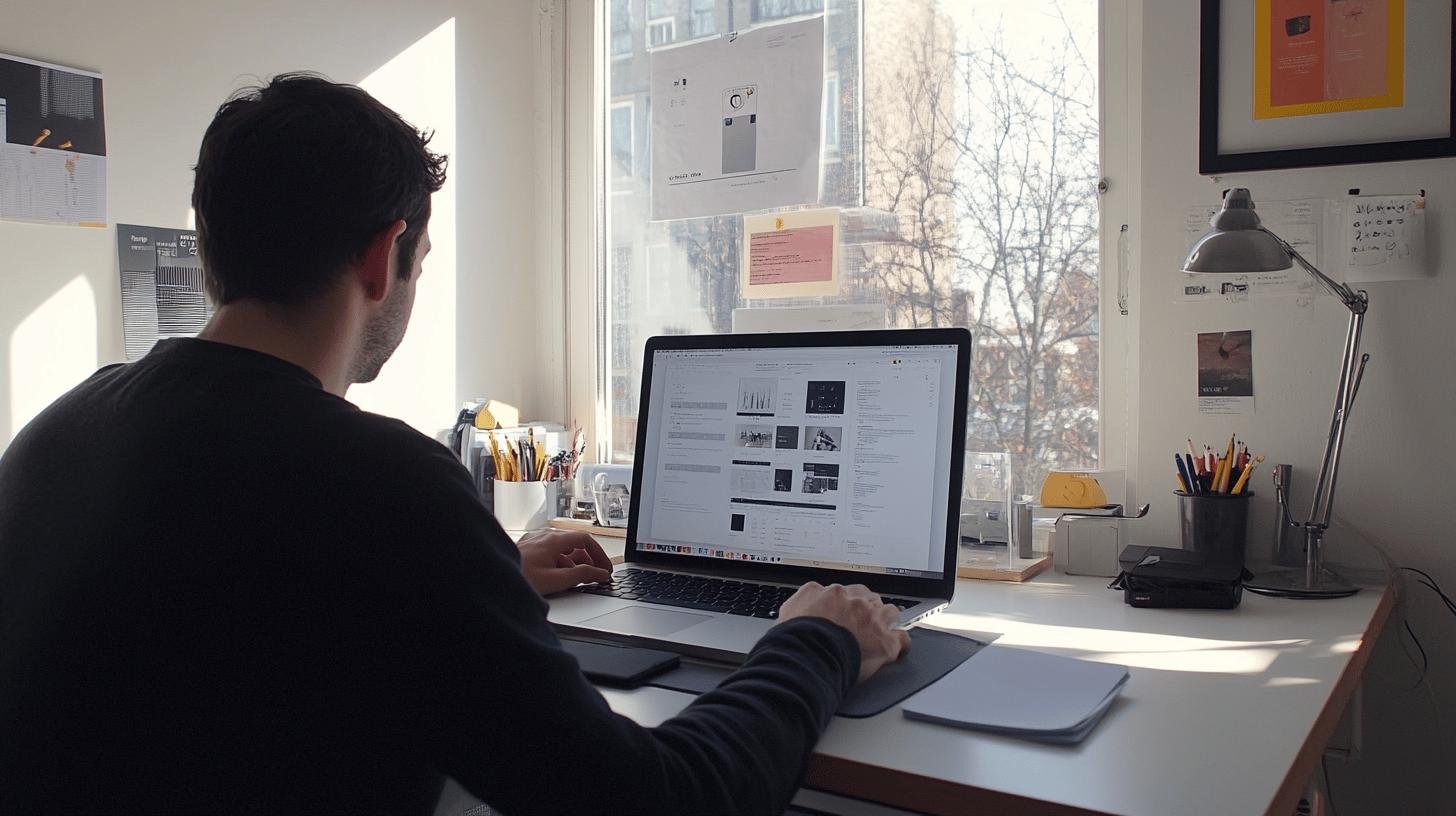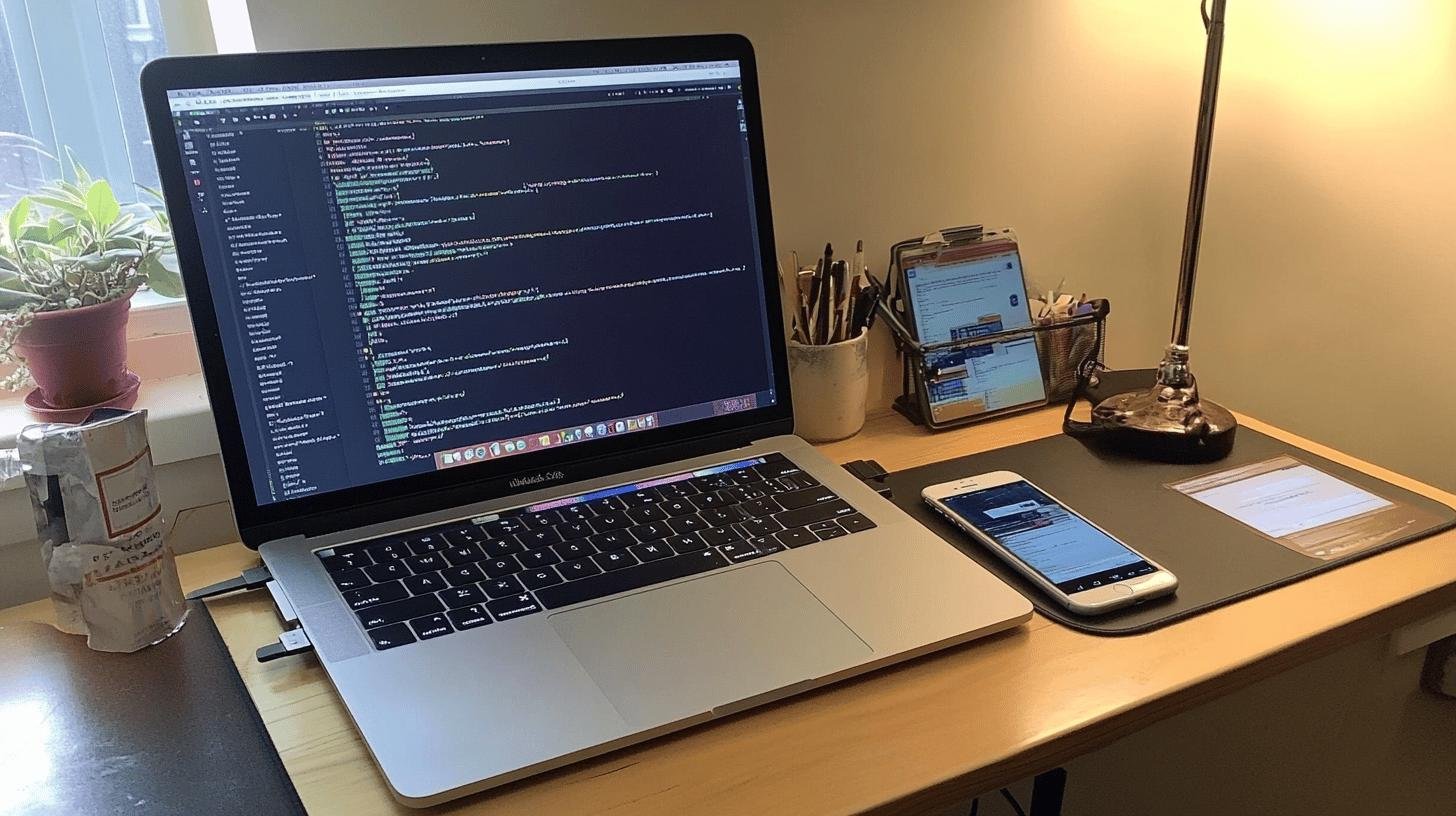Have you ever tried using your phone to browse a website and discovered that everything is messed up? Yes, I agree. It’s quite annoying, like trying to read a book with your eyes crossed! Making websites mobile-friendly is crucial since more people are using smartphones to browse the internet. We’re exploring how to optimize your website for mobile CSS to find out how to make your website appear great on all screens. Stay tuned for some shrewd advice that will enhance the user experience and wow your audience. Are you prepared to give your website the mobile optimization it needs? Let’s get started!
Understanding how to Optimize your Website for Mobile CSS
In today’s mobile-first world, websites must be as easy to use on phones as they are on computers. Many people now rely on their phones more than anything else. As a result, businesses should prioritize mobile users. Mobile-first design ensures a website performs well on phones, then scales up to larger screens like tablets and desktops. Responsive design is crucial. It allows a website to look good on any screen size. Without it, users might get frustrated, which is not good for business. Sites that aren’t mobile-friendly can also suffer in search engine rankings.
Optimizing your website with mobile CSS offers several benefits:
- Better User Experience: A website that’s easier and more enjoyable to use on a phone.
- Improved SEO: Search engines prefer sites that function well on mobile.
- Faster load times: Mobile CSS helps your site load faster on phones.
- Increased Engagement: Users are more likely to stay on a site that’s easy to navigate.
- Competitive Edge: A smooth mobile experience helps you stand out from competitors.
Ignoring mobile optimization means missing a large part of your audience. If a site isn’t responsive, it might be hard to navigate or read, leading to a poor impression of your business. No one wants to lose potential customers or be penalized by search engines. Thus, making your site mobile-friendly is not just nice to have—it’s essential!
Implementing CSS Media Queries for Responsive Design

Wonder how websites fit screens of all sizes? CSS media queries make it possible! These powerful tools adjust styles based on the screen size. Whether on a tablet, phone, or desktop, your site looks just right. Media queries act like a fashion consultant, advising your website’s appearance based on the device.
Setting Breakpoints
Breakpoints are points where your site decides to change its style for different screen sizes. Here are some common breakpoints:
| Breakpoint | Description |
|---|
| 600px | Targets small devices like phones. |
| 768px | Perfect for medium devices like tablets. |
| 992px | Ideal for larger tablets or small laptops. |
| 1200px | Best for desktops and large screens. |
For instance, use a media query like@media screen and (max-width: 1020px) to apply certain styles up to a screen width of 1020 pixels. This way, your site can look fantastic on any device it’s viewed on.
Customizing media queries isn’t just about screen size. They can also adjust based on screen orientation. Whether a phone is in landscape or portrait mode, your site remains polished. This is especially useful for media that needs different layouts depending on device orientation. By mastering media queries, you’re giving your website the flexibility to look its best on any device!
Techniques for Optimizing Loading Times on Mobile
Fast mobile load times are crucial. People expect websites to load instantly on their phones. If your site is slow, they might switch to a competitor’s site. Plus, faster sites tend to rank better on search engines. So, speed isn’t just a nice feature—it’s essential for keeping visitors happy and your business thriving.
Here are some tips to shrink your CSS and boost speed:
- Minify CSS: Strip unnecessary spaces and comments to reduce CSS file size. Less to load means faster speeds.
- Use External Stylesheets: load CSS externally so browsers can cache them, speeding up returning visits.
- Combine CSS Files: Fewer files lead to fewer server requests, resulting in faster loading.
- Limit CSS Rules: Keep only the necessary styles for mobile. Streamline your CSS.
- Optimize Images with CSS: Use CSS to scale images, ensuring they load quickly without wasting bandwidth.
Tools like Google’s Mobile-Friendly Tool can pinpoint what’s slowing your site. Reviewing these insights lets you fine-tune your CSS and elements to improve load times. It’s like having a personal speed coach for your site!
Utilizing Flexible Grid Systems and Fluid Images

Flexible grid systems are like a web designer’s Swiss Army knife. They ensure your website looks great on any device by adapting layouts to fit different screen sizes. Instead of fixed pixel widths, use percentages. This allows elements to stretch or shrink, fitting the screen like magic!
Steps to convert fixed widths to responsive units include:
- Measure in Percentages: Replace pixel widths with percentages for flexibility.
- Use a Fluid Grid System: Employ a grid system with relative measurements for balanced design.
- Set Maximum Widths: Limit how wide elements can grow to maintain readability and aesthetics.
- Adjust Padding and Margins: Use units like em or rem to adapt spaces with content size.
Fluid images can transform mobile design. They prevent images from breaking layouts. Set maximum widths at 100% via CSS so images resize to fit screens but don’t stretch excessively. This approach ensures a neat appearance and faster image loading, enhancing user experience.
Strategies for Testing and Ensuring Cross-Device Compatibility
Testing websites on various devices is like trying on clothes before buying them. You want to ensure everything fits perfectly! Browser developer tools are invaluable here. They let you test site appearances on multiple devices without the actual gadgets. Simulating different screen sizes and resolutions, these tools show how your site looks. You can catch and fix layout issues before users do.
Setting Up Custom Device Profiles
Creating custom device profiles tailors your site to specific screen dimensions:
- Open Developer Tools: Right-click and select “Inspect” in Chrome or Firefox.
- Toggle Device Toolbar: Click the device icon for a responsive view.
- Add New Device: Enter specific screen dimensions to create custom devices.
- Adjust Settings: Set viewport size, user agent, and throttling to mimic network speeds.
- Save Profile: Save the setup for future tests.
Resolve common cross-browser issues with these tips:
- CSS Prefixes: Use vendor prefixes to ensure style consistency.
- Font rendering: test fonts on various browsers; use web-safe fonts.
- JavaScript Functions: Use polyfills for unsupported JavaScript functions.
- HTML5 Features: Use libraries like Modernizr to detect feature support.
- Image Formats: Use widely supported formats like JPEG and PNG.
Regular testing keeps a website smooth and professional. Technology and browsers constantly evolve, so testing ensures your site stays current and delivers a top-notch experience for all users.
Leveraging CSS Frameworks for Efficient Mobile Design

CSS frameworks are your secret weapon for mobile web design. Frameworks like Bootstrap come with pre-designed components and grid systems, simplifying responsive design. This saves time and allows for more focus on customization. Instead of starting from scratch, you get a solid foundation, ensuring your site not only looks great but also functions well across devices.
Popular CSS Frameworks and Key Features
Choosing the right framework enhances the design process. Here are popular options:
| Framework | Key Features |
|---|
| Bootstrap | Extensive grid system, responsive utilities, customizable components. |
| Foundation | Flexible grid, mobile-first design, robust UI components. |
| Bulma | Fully responsive, modern design, user-friendly syntax. |
Frameworks serve as toolboxes filled with ready-made parts. You pick what you need, tweak settings, and your mobile site is set. Solving common design challenges, these frameworks streamline mobile design without sacrificing quality or speed. They handle heavy lifting, freeing your time for creative design touches, enhancing both workflow and user experience.
Conclusion
Getting into mobile CSS, we saw how it’s a must-have for businesses aiming to win on small screens. A mobile-first approach isn’t just a nice-to-have—it’s vital for keeping users happy and search engines smiling. Without this, you’re risking bad reviews and lost visitors.
Using CSS media queries to adjust a website’s layout ensures a smooth browsing experience across all devices. Remember, fast load times can make a big difference, and who doesn’t love a site that’s quick on its feet?
Whether you’re flexing your grid systems or leveraging CSS frameworks like Bootstrap, optimizing your website for mobile isn’t just a trend. It’s a necessity. Start tweaking that CSS and take your site to the next level!
FAQ
How to optimize a webpage for mobile?
To optimize a webpage for mobile, use a responsive design with CSS media queries. This ensures your site looks great on any screen size. Fast loading times and fluid images also improve the mobile user experience.
How to make a website compatible with mobile using HTML and CSS?
To make a website compatible with mobile, use CSS media queries to adjust your layout for different screen sizes. Converting fixed pixel widths to percentages helps create a flexible grid system.
How do you adapt a website for mobile devices?
Adapt a website for mobile by employing a mobile-first approach. This involves designing for smartphones first and ensuring the site scales up well for larger screens using responsive design techniques.
How to optimize website CSS?
Optimize website CSS by minimizing the CSS footprint. You can reduce file sizes, simplify design, and remove unused CSS. This improves load times and enhances the overall mobile web experience.




